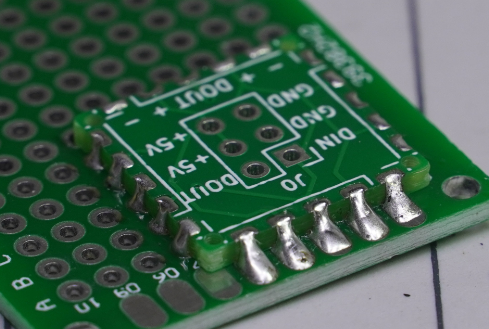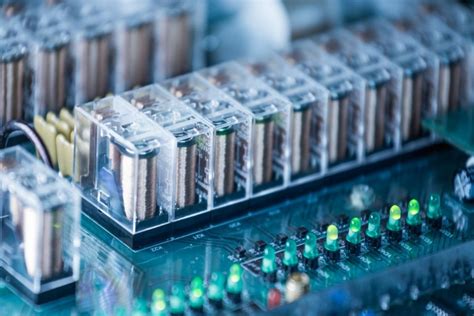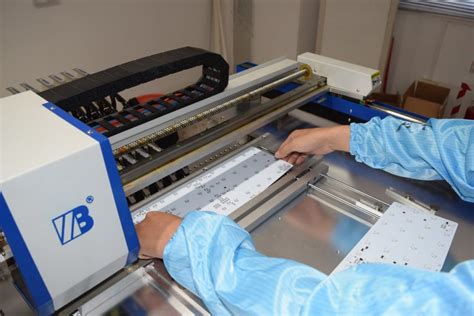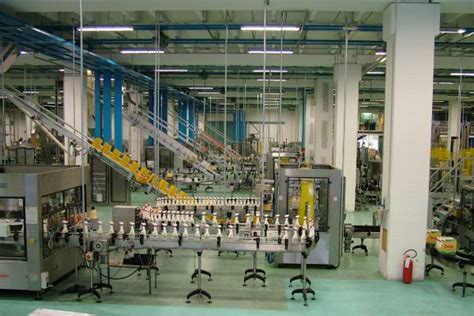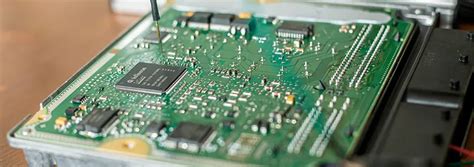Transforming High-Frequency Designs with Arlon PCB Innovations
Key Takeaways
The landscape of high-frequency designs is evolving rapidly, particularly with the introduction of Arlon PCB innovations that prioritize performance and efficiency. When exploring pcb manufacturing, you’ll discover that the unique properties of Arlon materials offer significant advantages over traditional options, making them an ideal choice for modern applications. These advancements allow pcb manufacturing companies to address critical challenges such as signal integrity and power loss. Especially in sectors where precision is paramount, utilizing high-quality materials can substantially lower the total cost of ownership. Moreover, understanding the intricacies involved in dielectric characteristics helps you make informed decisions about which materials to leverage for optimal performance. As the market demands increasingly complex solutions, it’s clear that investing in Arlon PCB technologies could lead to noteworthy reductions in manufacturing costs, enhancing both competitive edge and commercial viability for your business.
Transforming High-Frequency Designs: An Overview of Arlon PCB Innovations
In the rapidly evolving landscape of high-frequency designs, Arlon PCB innovations are setting new standards. The materials developed by Arlon are engineered to meet the growing demands of various markets, from telecommunications to aerospace. One significant aspect that you’ll find compelling is how these materials minimize loss and enhance overall performance, making them essential in today’s challenging environment.
When considering PCB manufacturing, understanding the nuances of materials becomes crucial. Many PCB manufacturing companies now prioritize innovations like those offered by Arlon, recognizing that the right materials can drastically improve the efficacy of their products. By utilizing high-quality substrates, your designs can achieve better signal integrity and reliability.
You should also keep in mind the critical aspect of pcb manufacturing cost. While Arlon materials might initially appear more expensive compared to traditional options, the long-term benefits they bring—such as reduced signal loss and increased efficiency—often outweigh these costs. Investing in superior materials can lead to a more competitive edge in your pcb manufacturing business.
| Key Factors | Traditional FR-4 Materials | Arlon PCB Materials |
|---|---|---|
| Signal Loss | Higher | Lower |
| Frequency Range | Limited | Wide |
| Cost Efficiency (Long-term) | Moderate | High |
By choosing Arlon’s innovative solutions, you can elevate your projects to meet current demands while preparing for future applications. Embracing these advancements is not just about keeping pace; it’s about leading the charge in high-frequency design innovation.
The Evolution of High-Frequency Circuit Board Applications
High-frequency circuit board applications have undergone significant transformations over recent years, largely driven by advancements in PCB manufacturing. As demands for faster, more efficient electronic devices increase, manufacturers must respond with innovations that elevate performance while minimizing loss. Understanding this evolution is essential for anyone involved in the PCB manufacturing business. Today’s PCB manufacturing companies are not only focused on using traditional materials; they are exploring alternatives that provide improved dielectric characteristics—traits that are crucial for high-frequency applications like telecommunications and aerospace equipment. You will find that materials like Arlon PCB exemplify these advancements, revealing how specialized solutions can change the landscape of your design processes. By embracing these innovative materials, you can significantly lower pcb manufacturing costs while enhancing the capabilities of your products to meet modern standards. This ongoing evolution hints at a future where high-frequency applications will further redefine the boundaries of electronics, enabling designers to push the limits of what’s possible in their projects.
Key Advantages of Arlon PCB Materials in Modern Designs
When exploring Arlon PCB materials, you’ll discover several key advantages that set them apart in the realm of modern circuit board applications. First and foremost, these materials are engineered for superior electrical performance, making them particularly beneficial for high-frequency designs. This enhancement translates into reduced signal loss and improved reliability, crucial for applications in telecommunications and aerospace sectors where performance is paramount.
Another significant advantage is the thermal stability exhibited by Arlon PCB materials. This characteristic allows your designs to operate efficiently even under intense heat conditions, thereby prolonging the lifespan of your components and minimizing maintenance costs. As you assess the pcb manufacturing cost, it’s essential to consider these long-term benefits that can outweigh initial expenditures.
Furthermore, you’ll find that many leading pcb manufacturing companies are now integrating Arlon materials into their production lines due to their ability to meet stringent industry standards and regulations. This shift not only improves product quality but also enhances your competitiveness within the pcb manufacturing business landscape.
“Investing in advanced materials pays dividends through enhanced performance and durability.”
As modern electronics continue to evolve, staying ahead with innovative solutions like Arlon can be pivotal in managing today’s demanding applications. Whether you’re a designer or a manufacturer, embracing these advancements will enable you to meet market expectations while ensuring your products remain at the forefront of technology.
Understanding Dielectric Characteristics in Arlon PCB Solutions
When considering high-frequency designs, the dielectric characteristics of materials become crucial. Dielectric constant and loss tangent are two key parameters that dictate a material’s performance in PCB manufacturing. Arlon PCBs stand out due to their superior dielectric properties, which allow for more precise signal integrity and reduced signal loss. This enhancement is particularly important in applications where signal fidelity is paramount. Your choice of PCB manufacturing materials directly impacts the overall pcb manufacturing cost, quality, and performance of your designs. As you evaluate different options, remember that selecting a material with an optimal dielectric profile can significantly elevate your product’s capabilities. Additionally, understanding how different PCB manufacturing companies formulate their materials can provide insights into their advantages for specific applications. By choosing Arlon, you are investing in a pcb manufacturing business that prioritizes innovation and performance, ensuring your designs meet the demanding needs of modern electronic applications.
Comparative Analysis: Arlon PCB vs. Traditional FR-4 Materials
When evaluating Arlon PCB materials against traditional FR-4 substrates, it’s essential to consider several performance metrics that directly impact your pcb manufacturing processes. While FR-4 has been a staple in the industry for decades, advancements in Arlon PCB technology have introduced materials with significantly improved dielectric properties. This translates to lower signal loss and better overall performance, making them the preferred choice for high-frequency applications. For instance, if you are engaged in the pcb manufacturing business, selecting Arlon PCB materials can lead to a notable reduction in the pcb manufacturing cost, primarily due to fewer signal integrity issues during operation. Moreover, many pcb manufacturing companies are adopting these innovative materials to meet the stringent requirements of modern circuit board applications across various markets. As a result, your designs might experience enhanced stability and reduced thermal degradation, greatly benefiting from the unique properties that Arlon brings to high-frequency designs. This comparison highlights how transitioning from traditional methods can not only modernize your product offerings but also optimize operational efficiencies in your projects.
Innovative Manufacturing Techniques for Enhanced Performance
In the ever-evolving landscape of pcb manufacturing, advancements in technology have enabled pcb manufacturing companies to optimize processes that significantly enhance the performance of high-frequency designs. You can expect to see innovative techniques such as advanced layer stacking and precision laser drilling, which are crucial in minimizing signal loss and improving overall efficiency. These methods not only streamline production but also reduce pcb manufacturing cost, thus allowing for more competitive pricing in the market. As you delve deeper into the specifics, consider how integrating Arlon PCB materials can elevate your projects, ensuring they withstand the rigorous demands of today’s high-frequency applications. The effective use of these materials, combined with cutting-edge production methods, positions you strategically within the pcb manufacturing business landscape—equipping you to tackle challenges head-on while delivering superior performance and reliability in your designs.
Addressing Designer Challenges with High-Frequency PCB Materials
As a designer, you are likely familiar with the complexities involved in creating high-frequency PCBs. The demands for performance and efficiency in modern electronics place significant pressure on pcb manufacturing companies to deliver superior materials that meet these challenges head-on. One of the primary hurdles you face is maintaining signal integrity while minimizing loss during transmission. Traditional materials often fall short, leading to signal degradation and impacting overall performance.
Arlon PCB innovations provide an effective solution by leveraging advanced dielectric characteristics that enhance the reliability of your designs. These materials are strategically engineered to enable better efficiency in high-frequency applications, making them a valuable asset in your pcb manufacturing business.
Additionally, understanding the pcb manufacturing cost associated with these advanced materials allows you to make informed decisions when selecting components for your projects. By choosing quality over quantity, you can reduce long-term expenses related to production failures or redesigns due to subpar material performance. In an industry that continually evolves alongside technological advancements, adapting your strategies to incorporate Arlon PCB solutions will not only help address current challenges but also prepare you for future demands in high-frequency applications.
Future Trends: The Next Generation of Arlon PCB Technologies
As you explore the forefront of pcb manufacturing, it’s essential to recognize the impact of Arlon PCB innovations on high-frequency designs. The transition to advanced materials is not merely a trend but a necessity for pcb manufacturing companies aiming to meet the growing demands of contemporary technology. These innovations enhance performance and minimize loss, providing your designs with the reliability and efficiency expected in the market. Furthermore, understanding the implications of pcb manufacturing cost is crucial; investing in superior materials can lead to long-term savings by reducing failures and enhancing product lifespan. In the dynamically evolving pcb manufacturing business, adopting cutting-edge technologies can set you apart from competitors, highlighting the importance of remaining at the forefront of material science and production techniques. With continuous advancements, staying informed about future trends will empower you to make strategic decisions that will elevate your projects to new heights.
Conclusion
In summary, the advancements in Arlon PCB technologies are pivotal for designers focusing on high-frequency applications. By adopting these innovative materials, you are aligning your projects with superior performance standards that surpass traditional alternatives. With a keen understanding of the varying dielectric characteristics, you can significantly reduce signal loss, making Arlon PCB a favored choice among reputable pcb manufacturing companies. The evolving landscape of the pcb manufacturing business emphasizes the necessity of selecting materials that not only meet modern performance demands but also optimize production costs. This approach is crucial, as the competitive nature of the industry requires designers like you to be equipped with cutting-edge solutions to address existing challenges. As you consider your options, remember that engaging with Arlon PCB can enhance your design capability and ensure you harness the potential of future technologies in your projects.
FAQs
What is Arlon PCB?
Arlon PCB refers to a series of printed circuit board solutions that utilize advanced materials and technologies to enhance high-frequency design applications.
How do Arlon PCB materials compare to traditional FR-4 materials?
Arlon PCB materials offer superior dielectric characteristics, which significantly reduce signal loss and allow for better performance in high-frequency environments compared to traditional FR-4 materials.
What are the key advantages of using Arlon PCB for high-frequency designs?
The key advantages include improved signal integrity, reduced pcb manufacturing cost, enhanced thermal management, and tailored material properties that meet specific market demands.
Are there any challenges when transitioning to Arlon PCB materials?
Transitioning might require adjustments in your design process and familiarity with the unique properties of Arlon PCB. However, the benefits often outweigh these challenges.
Who are the leading pcb manufacturing companies that offer Arlon PCB solutions?
Many leading pcb manufacturing companies are now incorporating Arlon’s innovative materials into their offerings, ensuring you have access to top-notch technology for your designs.
How can I find out more about pcb manufacturing costs with Arlon technologies?
Many companies provide detailed quotations based on the specific requirements of your project. Always check their pcb manufacturing business site for a cost estimate that fits your needs.
If you would like more information on how these innovations could benefit your designs, please click here: Andwin PCB Manufacturing.


